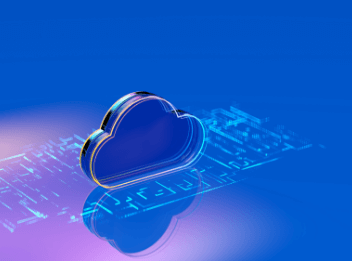In today’s data-driven world, companies are more reliant on their data than ever before. Losing important data can be catastrophic and lead to significant financial losses, legal issues, and even business closure. Traditionally, data backup can be considered the go-to solution for protecting data, but as cyber threats become much more sophisticated, data backup alone is no longer sufficient to keep data safe. As a result, it is transitioning to what is known as data protection, and organizations must be prepared for the shift.
According to Statista, the average cost of a data breach globally in 2022 was $4.35 million, an increase from $4.24 million in the previous year. Moreover, cyber-attacks are becoming more frequent and complex, with ransomware attacks on businesses rapidly increasing. This highlights the need for a robust data protection strategy to prevent and mitigate cyber threats and provide efficient and comprehensive backup solutions.
This article will explore the shift from data backup to the new idea of data protection, what it means for organizations, and how to prepare for the transition. We’ll also discuss the latest data protection technologies and features, such as continuous data protection and threat prevention. So, are you ready for the data protection era? Let’s find out.
The Shift From Data Back Up To Data Protection
Backup has traditionally been a way to create a copy of data on a separate physical device or in the cloud that can be used to restore data in case of data loss. However, data protection goes beyond backup to include a comprehensive set of strategies and tools that ensure data integrity, availability, and confidentiality.
Preparing For Data Backup Transition Into Data Protection
The transition away from data backup becomes essential for any organization that wants to keep its data safe and secure. To prepare for the transition, businesses should consider the following steps:
- Understand the Differences
Understanding these differences is the first step toward developing a robust data protection strategy. Data protection is a more comprehensive approach that includes backup and additional features, such as threat detection and prevention, continuous data protection, and disaster recovery.
- Evaluate Your Current Strategy
Organizations should evaluate their current backup strategy to determine what is working and what needs improvement. This can involve identifying gaps in the current approach and considering the significant features that data protection solutions offer to address those gaps.
- Assess Your Risks
Identify the risks your organization faces, including potential cyber threats and disasters, and determine how these risks can impact your data. This will help you prioritize which data protection features are most critical for your business.
- Choose The Right Solutions
After identifying your needs and risks, you can evaluate the different data protection solutions available and select the most suitable for your business. Considering the features, pricing, and support other vendors offer is essential.
- Train Your Staff
Once you have selected your data protection solution, you need to train your staff on how to use it. This includes training on how to backup data, how to recover data, and how to detect and prevent potential threats.
Important Data Protection Technologies and Features
- Air Gapping
Air Gapping is another critical data protection feature that secures one or more backups from potential attackers by isolating them. This feature is useful in preventing malware attacks.
- Continuous Data Protection
Continuous Data Protection (CDP) is a technique that constantly and automatically backs up data as it is modified. This feature can help mitigate data loss risk and enable an environment to failover much more efficiently in a disaster.
- DR Orchestration
DR Orchestration facilitates the automated, progressive system recovery following a catastrophic event. This feature ensures that businesses can resume operations quickly after an outage.
- All the Other Cloud
All the Other Cloud is another data protection feature that offers support for Office 365, Google Workspace, Kubernetes, Docker, and other related software. This feature is essential in ensuring businesses can protect data across different cloud environments.
- Cloud To Cloud
Cloud to Cloud is a data protection feature that allows transferring data from one service provider to a different one, as is common with SaaS programs. This feature ensures that businesses can protect data across different cloud environments.
- Zero Trust Framework
Zero Trust Framework makes use of the idea of least privilege. Service providers are making use of the infrastructure for data protection and restoration. This function is critical for keeping information secure, as it restricts access to just those who should have it.
- Threat Prevention and Detection
Threat Prevention and Detection is another data protection feature that identifies malicious software while backups are being carried out and analyzes the ones that have been completed. This feature is essential in preventing data loss due to cyberattacks.
Do You Need Help To Successfully Transition?
Don’t wait until a disaster strikes to transition to a comprehensive data protection strategy. Partner with Partner IT to help you prepare and protect your data.
Contact us today by calling us at 519-772-2525 (Kitchener) or 519-672-0900 (London) or reach us online.


